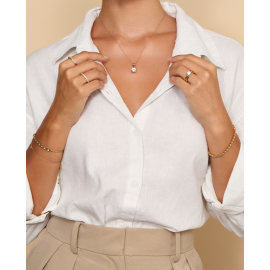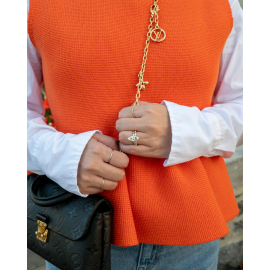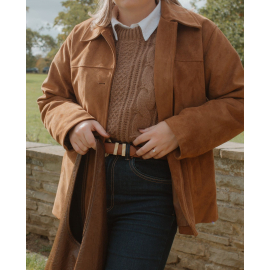Price match guarantee

We’ve teamed up with Klarna to provide flexible payment options, allowing you to shop the way you want. With Klarna, you can split your payment into 3 instalments or choose to pay later, making your shopping experience smoother and more convenient. Your order total must be between £100 and £499 to qualify.

We’ve teamed up with Klarna to provide flexible payment options, allowing you to shop the way you want. With Klarna, you can split your payment into 3 instalments or choose to pay later, making your shopping experience smoother and more convenient. Your order total must be between £100 and £499 to qualify.

September 01, 2020 | by Admin
It is law within the UK that every item of precious metal sold such as Platinum, Gold, Silver is stamped labelling the item with the type of metal it is. Platinum pieces which weigh less than 0.5 grams, 18ct Gold and Palladium pieces weighing less than 1.0 gram and Silver pieces weighing less than 7.78 grams are except from hallmark.
At Diamonds Factory all our products are hallmarked as per UK hallmarking law from London Assay Office (The GoldSmith Company)
The Goldsmiths' Company Assay Office is the oldest assay office in the United Kingdom. It has provided hallmarking services since The Goldsmiths' Company was founded in the 1300s. The company received its royal charter in 1327 and ranks 5th in order of precedence of the 12 Great Livery Companies of the City of London.
Hallmarking dates back to the 1300s when Edward I of England passed a law requiring any item made of silver, which was offered for sale, to be at least of equal quality as that of the coin of the realm (silver currency). The wardens of The Goldsmiths' Company were tasked with visiting workshops in the City of London to assay (test) silver articles. If these articles were found to be below standard they were originally destroyed and the metal forfeited to the King. If they passed, each article received the King's mark of authentication - the mark of a leopard's head. By 1478, there were several hundred workshops and merchants manufacturing silver articles in the City of London. It was not possible for the wardens to visit them all so the merchants were ordered to bring their items to Goldsmiths' Hall for testing and marking and a permanent Assay Office was established in the building. This is the origin of the term hallmark - struck with the King's mark at Goldsmiths' Hall.
In 1544 the Goldsmith's Company adopted the King's mark as their town mark and the mark of the leopard's head is now internationally recognised as the mark of this assay office.
The Goldsmiths's Company Assay Office is still based at Goldsmiths's Hall and remains the oldest company in Britain to be continually trading from the same site. However, it also has two satellite offices; at Greville Street in Hatton Garden in the heart of the London jewellery quarter and within a high security complex near London's Heathrow airport. It now has a new off-site facility within the Dalston-based jewellery manufacturer, Allied Gold. This is the first time in the Assay Office's 700 year history that it has opened permanent hallmarking services on a customer's premises.
In addition to hallmarking, the office has now expanded its range of services to support the jewellery trade and enforcement authorities. It offers a variety of specialist analytical services including nickel, lead & cadmium testing, antique silver dating, non-destructive compositional analysis, plating thickness measurement and a melt and assay service for scrap precious metal carried out in their fully independent on-site laboratory. Other services offered are a jewellery valuation service, laser marking, trading standards assistance, high quality photography and a comprehensive range of training and educational seminars, lectures and specialist events.






Millennial Marriages: How do Generation Y feel about Engagement Rings?
We’ve all heard it many times before, how Millennials are the ‘lazy’ and ‘entitled’ generation. But, right now, they are the generation that are most likely ‘to put a ring on it’. We were curious about whether these preconceptions make Millennials feel differently about proposing, compared to other generations. Do they feel the need to spend so much? Do they believe in marriage at all? Or are they more traditional than others think?
We surveyed over 2300 people to explore how much Millennials think they should spend on engagement rings, who they think should buy the ring, and whether a placeholder is a good idea - the results may surprise you!
Actual vs Expected costs of engagement ring according to millennials
As Millennials are either just starting their careers or, right in the peak of them, the amount they spend on diamond engagement rings can vary dramatically.
Nonetheless from our data, we discovered that millennials spend £1911 on average, on an engagement ring. While they are only spending marginally more than the national average (£1865), Millennials feel like they should be splashing the cash. They believe they should spend around £3045 on an engagement ring, which interestingly, is higher than any other age group.
Our survey results show that Millennial women think an engagement ring should cost £2885, while Millennial men believe it should cost £3626, which is almost double than what is actually being spent. Whether it’s because they’re keen to impress, drunk in love or just among the higher earners, their expectations are high.
These high expectations may be a product of Millennial-esque ambitions, or their surprising desire to follow some engagement traditions, like the 3-month rule. From our data, we learned that almost 28% of Millennials think that the 3-month rule is about right, which means they think they should spend, on average, £7650 on an engagement ring…
Use our engagement ring calculator to help you set budgets based on your lifestyle to help you buy the perfect ring.
Who do millennials think should pay for the engagement ring?
As Millennials want to abide by weddings and engagement traditions, the majority of 25-39 year olds believe that the proposer should be the person who pays for the ring. However, in a surge of independence, 11% of proposed millennials decide to pay for their own ring, and although 7% think that the cost of the ring should be shared, only 4% actually split the cost between them. In a few years time, when Gen Z’s are ready to pop the question, this number may rise as they are known for being more invested in inclusivity than previous generations.
How do millennials view placeholder engagement rings?
One of our survey questions was centred around the idea of placeholder rings, which is very popular if someone doesn’t have the funds yet to get the ring their partner desires, or if they’ve proposed very impulsively. When it comes to Millennials though, they think that placeholder rings are one of the worst ideas possible. In fact, when asked if a placeholder ring is a good idea, a huge 25% said no with 57% not knowing what a placement ring even was.
So, if you were thinking of proposing to your Millennial partner it’s probably best to either take your time to invest in a real engagement ring or choose one of these alternate ideas to propose without a ring, to avoid disappointment!
If you’re entering the world of engagement ring shopping, read our handy engagement ring guide for everything you need to know.
Alternatively, if you’re looking for something different than the standard diamond ring, take a look at our beautiful gemstone engagement rings.